
Water determines the Great Lakes Region’s economic future
Climate change, geopolitics and business opportunities power a blue economy
As a few hundred people applauded in support of a 10-year old girl at a community hall in early May in Fernie, B.C., a man at the front of the room wasn’t clapping.
Instead, Thomas McDonald asked some 250 people, mostly residents of this picturesque mining and resort town nestled in the Canadian Rocky Mountains, to quiet down.
But before McDonald — one of 15 directors elected on the region’s local government — could finish his sentence, the crowd drowned him out, cheering even louder for the elementary school student, Anya Harshan, as she and her father, Harshan Ramadass, took their seats.
Anya Harshan had just spoken about her science fair project on the Galloway Lands development project at the public hearing, chaired by McDonald. The real estate proposal would slash through a wildlife corridor — home to at least 10 rare or at-risk species — to build a gated community with up to 90 luxury homes.
Anya Harshan said her research led her to the conclusion that the Galloway Lands proposal was a bad idea.
“So please adults here who are responsible for this, say ‘No to Galloway,’ ” she told the crowd, prompting the chorus of cheers.
It wouldn’t be the only time McDonald urged the crowd to refrain from clapping or cheering so it would be a “safe space and a mutual space for everybody to express their opinions.”
But for many in the room, his efforts to curb their enthusiasm confirmed their fears that the local government — the Regional District of East Kootenay — had already made its decision.
The regional district is governed by nine officials elected at the municipal level from eight separate municipalities, along with the six area directors who represent different sectors outside of the boundaries of those municipalities.
Nine elected members of the district, including McDonald, would vote later that month to adopt by-law changes required to proceed with the project. Six, including Fernie’s Mayor Nic Milligan, voted against.
Ramadass, praised his daughter for being brave enough to speak up about a topic she cared so deeply about, with emotions running high.
“She actually went and had the courage to talk about it,” he said.
Ramadass is also a city councillor in Fernie, but he does not have a seat on the regional government. He said the regional district’s decision, which runs counter to widespread opposition to the project, strikes at the heart of the democratic process.
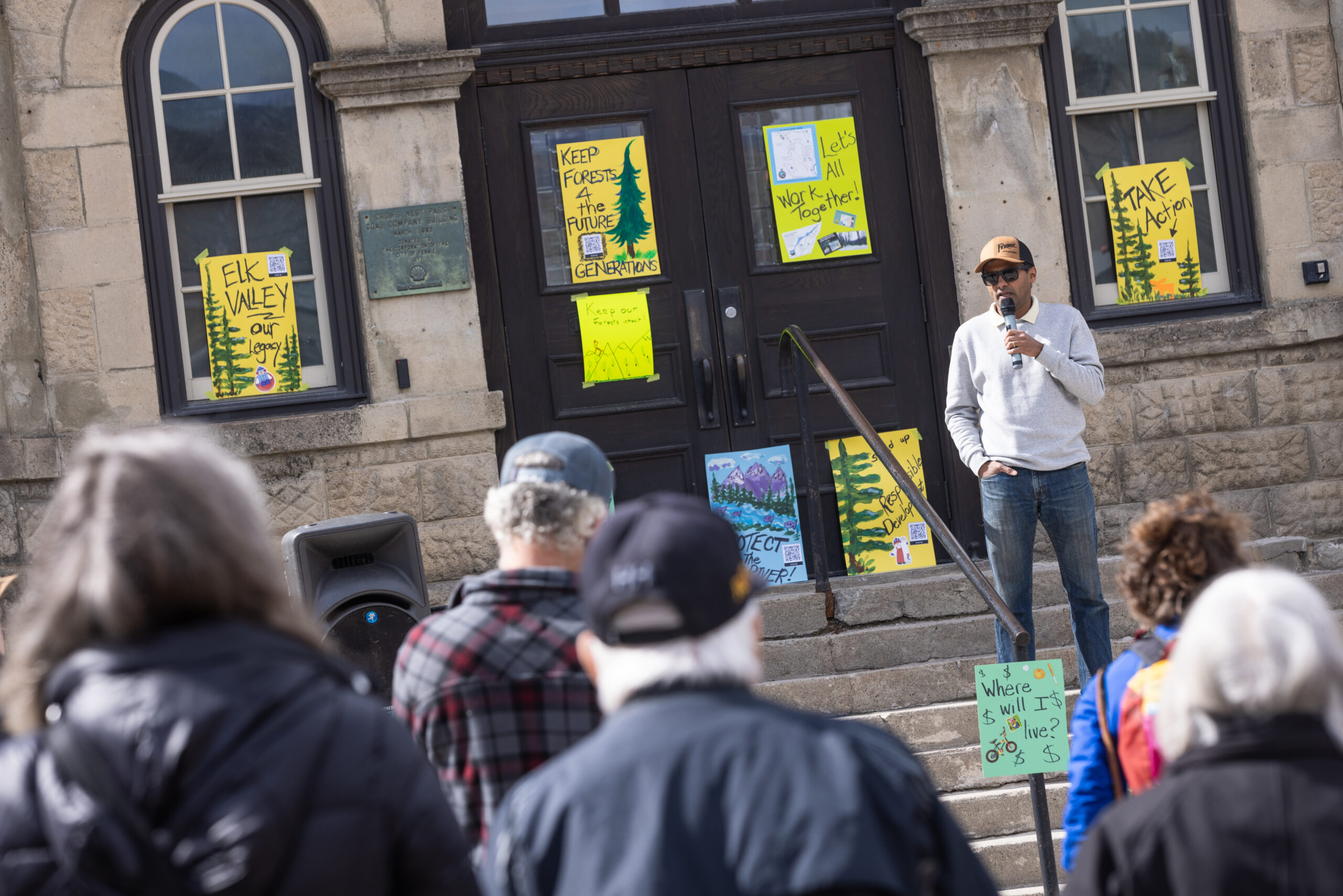
The public hearings revealed how broadly the community objects to the project: it’s something those in higher income households on the ski hill and lower income residents in apartments or mobile homes agree on.
Hundreds wrote letters to the district expressing their opposition, while only a small number voiced support.
The real estate project proposes a new private road with a gate to keep out non-residents. The road would require building a bridge that crosses over an environmentally sensitive area called Lizard Creek, an important habitat for an at-risk population of cutthroat trout. The land has been privately owned and would be sold to the developer as part of the deal.
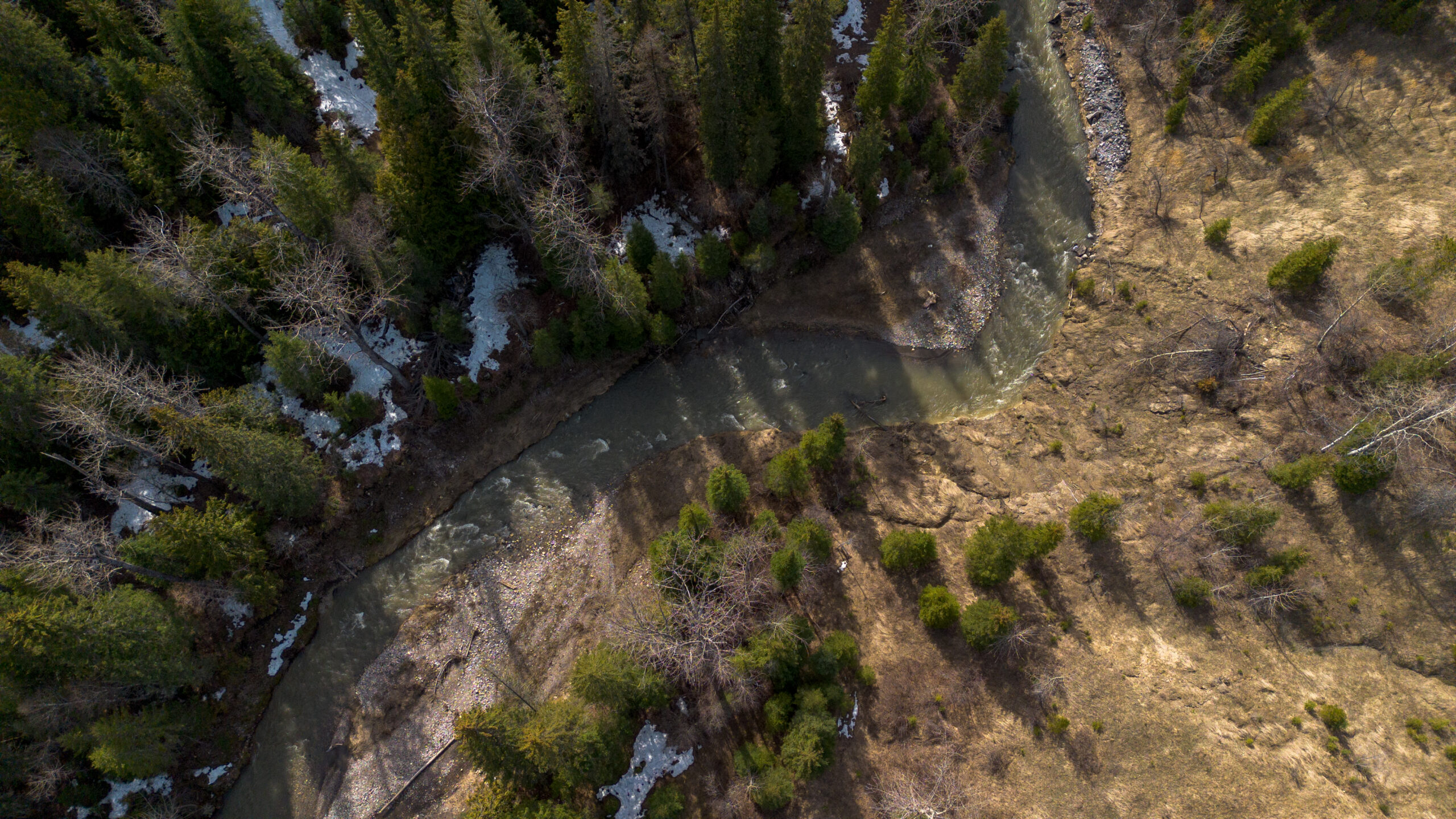
In an interview with The Narwhal in May, the developer said the project strikes a balance by proposing to protect some of the Galloway Lands area, while also implementing a series of mitigation measures to address the impacts of the development.
The regional district reviewing the project represents more than 65,000 residents spread out over a vast area in southeastern B.C. This means its elected officials are often voting on issues affecting residents more than 100 kilometres away.
In this particular case, McDonald represents the area of the proposed development, near the Fernie Alpine Resort, a popular tourism destination just outside Fernie’s city limits. But most of those who voted with McDonald represent constituents who live in other parts of the regional district.
This also means Fernie residents and those who live on the ski hill have no power to vote for or against eight of the politicians who approved the Galloway Lands project.
“My trouble with this was more focused on grassroots democracy than anything else,” Ramadass said. “And you might call parts of [these] people conservatives, a bunch of people liberals, but pretty much a majority of the citizens were against this on various grounds. And my focus was to listen to our constituents.”
With the development pending, closer inspection of key players involved in the Galloway Lands project are fuelling concerns about whether the game was rigged.
The Galloway Lands proposal is spearheaded by Reto Barrington, a former Canadian Olympic skier and lawyer who has dabbled in real estate projects over the past few decades with varying degrees of success. He personally declared bankruptcy in 2013, before re-emerging with new projects.
Barrington is promoting the project through a private company he leads called Handshake Holdings Inc.
He has said the project will boost the overall economy and increase property tax revenues for the regional district, while offering new protections for some sensitive lands.
During the public hearings, Harshan Ramadass was among the people attempting to raise objections about whether the regional district conducted a fair review.
“I know the lobbyists have a strong grip on many of you,” he wrote in an email sent to regional district staff last April. “Do the right thing. Say no to lobbyists, listen to citizens for once.”
Ramadass told The Narwhal he was referring to the people who funded McDonald’s election campaign.
Less than a year earlier, McDonald narrowly squeaked into office, defeating his rival by 17 votes. Of the $3,141.64 he declared in campaign expenses, more than 95 per cent was covered by donations from three prominent supporters of the Galloway Lands development. Two of them — Barrington’s spouse and a communications consultant on the project team — gave the maximum allowed donation, $1,250. The third was a retired regional district politician who recused himself from voting on the project in 2022 due to the appearance of a conflict of interest.
McDonald contributed about $150 to his own campaign, which made up the remainder of his expenses. He told The Narwhal in an interview that the donations did not influence his position.
He said he promised during the 2022 campaign that he would strike a balance between economic growth and sustainability and believes his donors contributed because they supported his views.
“Ultimately, you’re looking for funding to help get your message out, and I want to stress my message was my message, it wasn’t anybody else’s message,” McDonald said. “There’s no strings attached.”
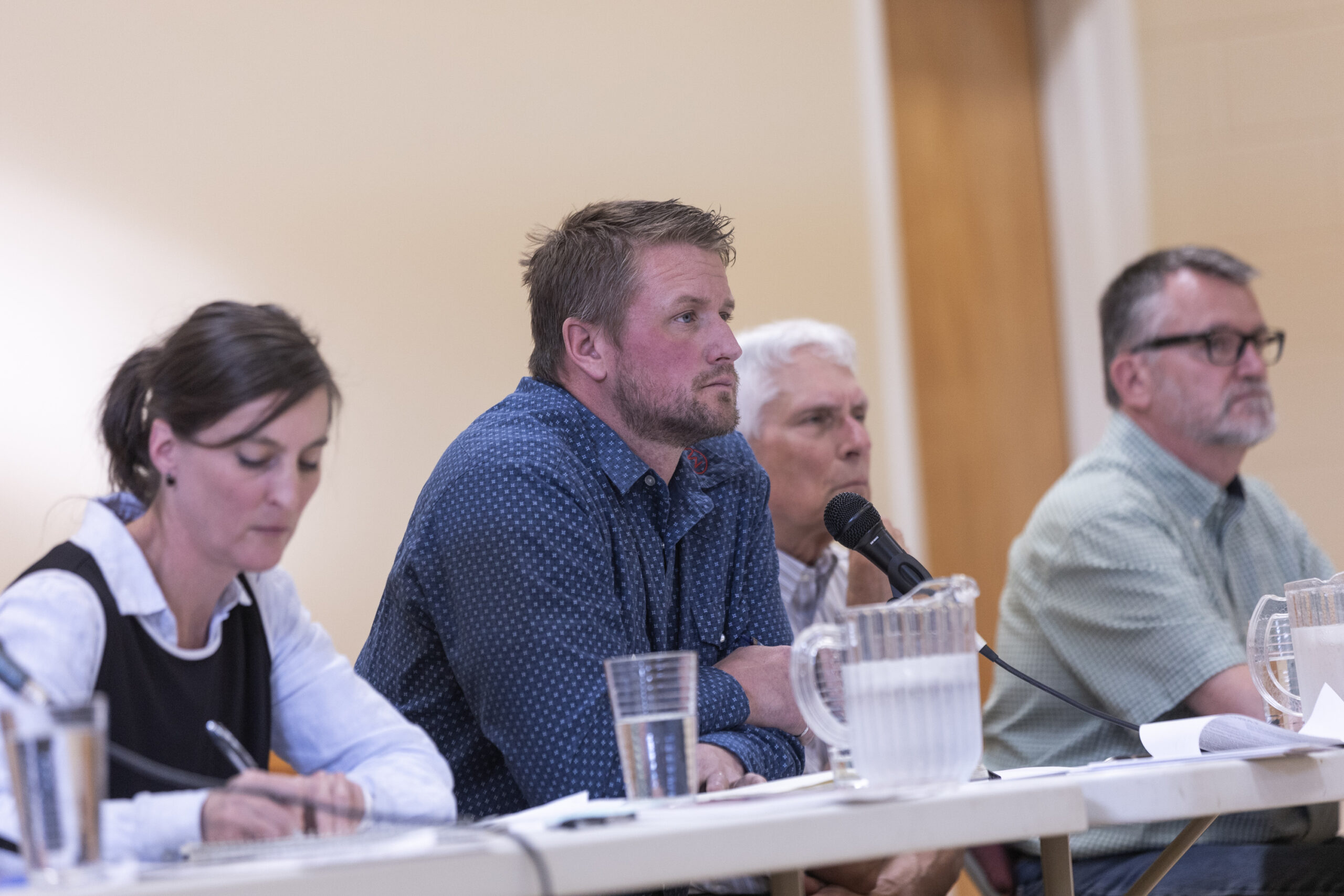
Once elected, McDonald said he heard from multiple people about the project, listening to both the developer and the project’s opponents.
“Although there was a very polarized view on this — it was a hard decision for everybody — I felt that through keeping an open mind through the whole process and engaging with so many different people as the elected official, I really felt [there was] good governance,” McDonald said.
McDonald added that reading Handshake Holdings’ application reassured him the developer would be able to adequately protect Lizard Creek, as did the requirement that the developer complete an environmental assessment.
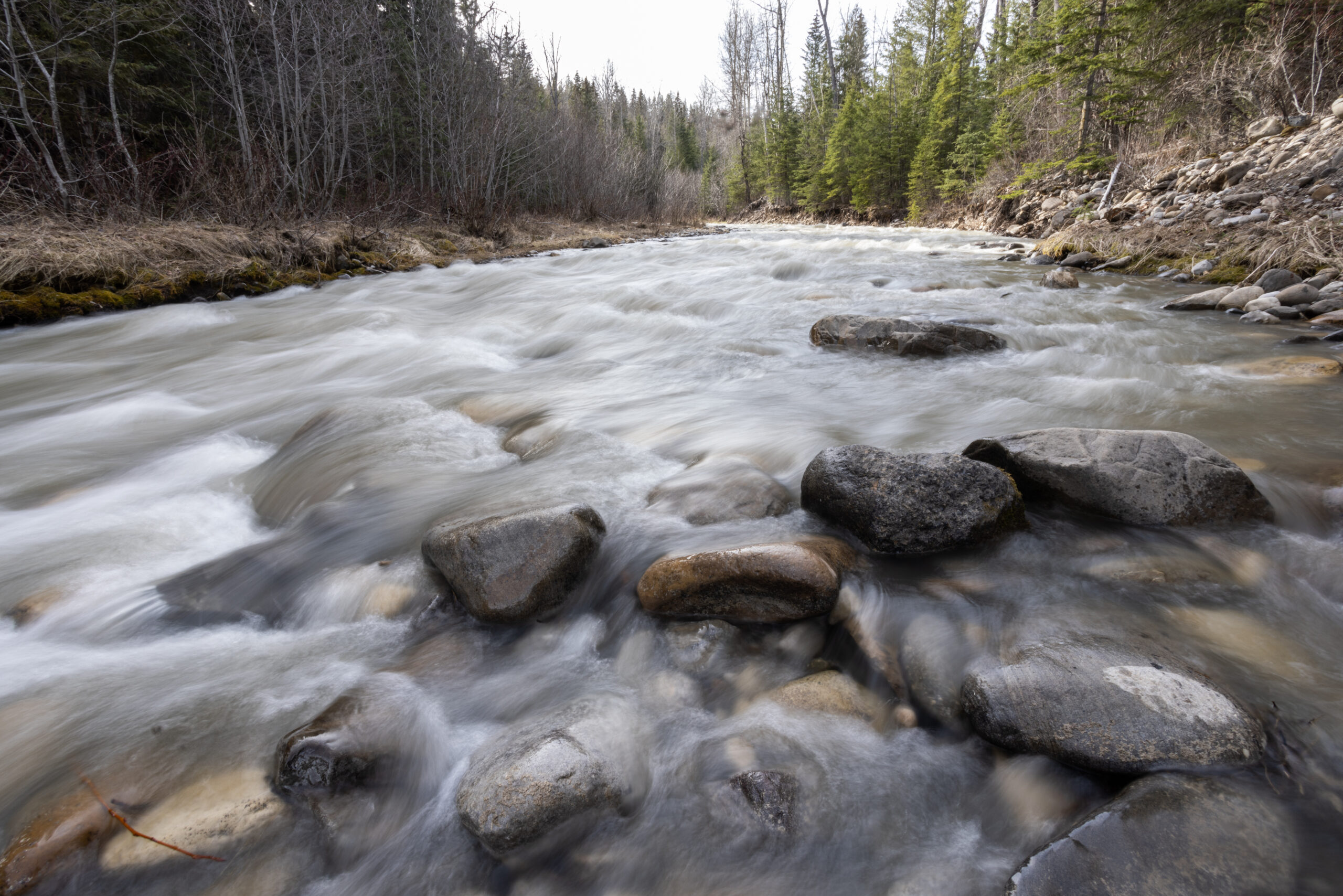
Handshake Holdings hired a consulting firm called Cascade Environmental Resource Ltd. to complete an environmental overview report in the summer of 2022. The report noted the proposed bridge over Lizard Creek could pose a threat to the trout, which are listed by both the federal and provincial governments under laws meant to protect endangered species, and that it would need a permit under B.C.’s Water Sustainability Act. B.C. doesn’t have a law dedicated to protecting endangered species, but requires some protections of these species under sections of seven different laws.
The consultants said construction of the bridge, as well as winter road salt runoff once it’s in use both posed pollution threats, but suggested these could be mitigated.
Cascade’s consultants spent three days doing a field assessment of the area in late July 2022. They also set up cameras to monitor various sites from July 26 to Sept. 29, 2022.
Despite the short sampling period, the report identified up to 10 rare and endangered species that could be affected by the project, including the Western screech owl, the American badger and the Grizzly bear.
Other experts, including local public health officials, First Nations, BC Parks and a provincial government biologist, have concerns about the risks of the project.
In a letter sent to the regional district in April, a senior fishery guardian from the Ktunaxa Nation Council said the Handshake Holdings proposal failed to acknowledge the importance of Lizard Creek and tributary stream fisheries that are habitat for the at-risk Westslope cutthroat trout. The letter also urged more studies, saying the proposal lacked details about how the developer planned to protect the streams.
Ariana McKay, a habitat biologist in the region for the B.C. Ministry of Water, Land and Resource Stewardship, told the regional district the development would “compromise” valuable habitat and recommended rejecting the project.
In late March, McKay sent the ministry’s assessment of the project to the regional district, noting the area was now “likely functioning as a refuge for wildlife from surrounding human impacts” and that no further development should be allowed in an area that has already been altered by human activity.
“The project area provides valuable habitat for multiple species and is currently relatively undisturbed; this project would permanently remove functioning habitat,” McKay wrote in an email to the district on March 29.
“Access to surrounding undeveloped land should remain restricted to protect wildlife and habitat values from the impacts of increased access.”
Her assessment came after the regional district sent her a copy of the report prepared by the environmental consultants hired by Handshake Holdings.
BC Parks did not express opposition or support for the project, but warned the regional district last spring that the development could put pressure on nearby Mount Fernie Provincial Park: since the park is already next to existing residential development, it could be isolated as a habitat “island.”
B.C. Interior Health has also opposed the development, arguing there was a “fundamental disconnect” between current and anticipated housing needs in the area and the proposal from Handshake Holdings to build luxury homes. The agency said Galloway Lands project failed to address critical issues such as the region’s housing affordability crisis and the shortage of service industry workers who cannot afford to live in Fernie.
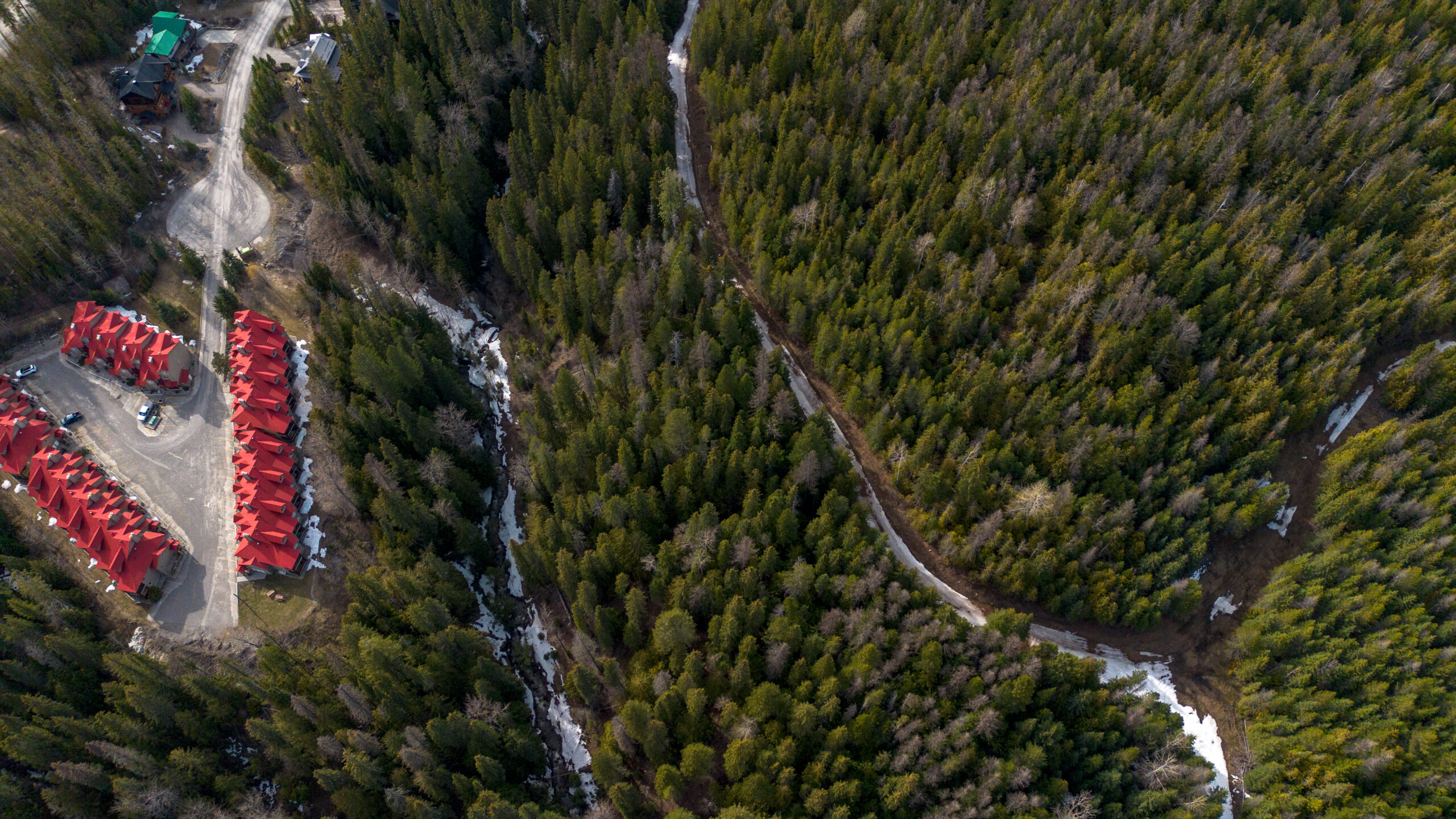
Despite these concerns, the regional district is letting the project go ahead. Various agreements require Handshake Holdings to conduct additional environmental studies and enact mitigation measures.
The company says it has changed an earlier proposal to outfit the new homes with septic tanks, which could create new environmental risks. Instead, Handshake Holdings now proposes to link the community to a wastewater system serving homes on the ski hill.
Meeting the environmental conditions depends in part on whether the regional district — already struggling for revenues — to cover costs, has the resources to monitor construction.
There’s also the question of whether Handshake Holdings has the financial means to cover the costs of mitigation efforts — which is hard to say since the investors behind Handshake Holdings are shrouded in mystery.
A number of supporters in town believe Barrington is a good businessman who delivers on his promises and generates profits.
Former Fernie mayor Mary Giuliano described Barrington as a “proven quantity with a strong connection to the town,” in an article published on a website operated by the Galloway Lands project’s communications consultant.
However, Barrington’s business ventures did not always work out as planned. Ten years ago, Barrington declared bankruptcy after racking up nearly $3.5 million in debts.
The Narwhal pieced together some details about Barrington’s business interests and track record through a review of corporate filings and court records in three provinces as well as interviews with people who have worked or interacted with him.
Those showed that Barrington previously set up several companies in Canada and also had loans worth several hundred thousand dollars in the United States.
According to his January 2013 bankruptcy court filing, Barrington’s largest creditor was the Canada Revenue Agency, to which he owed nearly $1.1 million. He also owed about $219,000 to the U.S. Internal Revenue Service, according to his bankruptcy proposal.
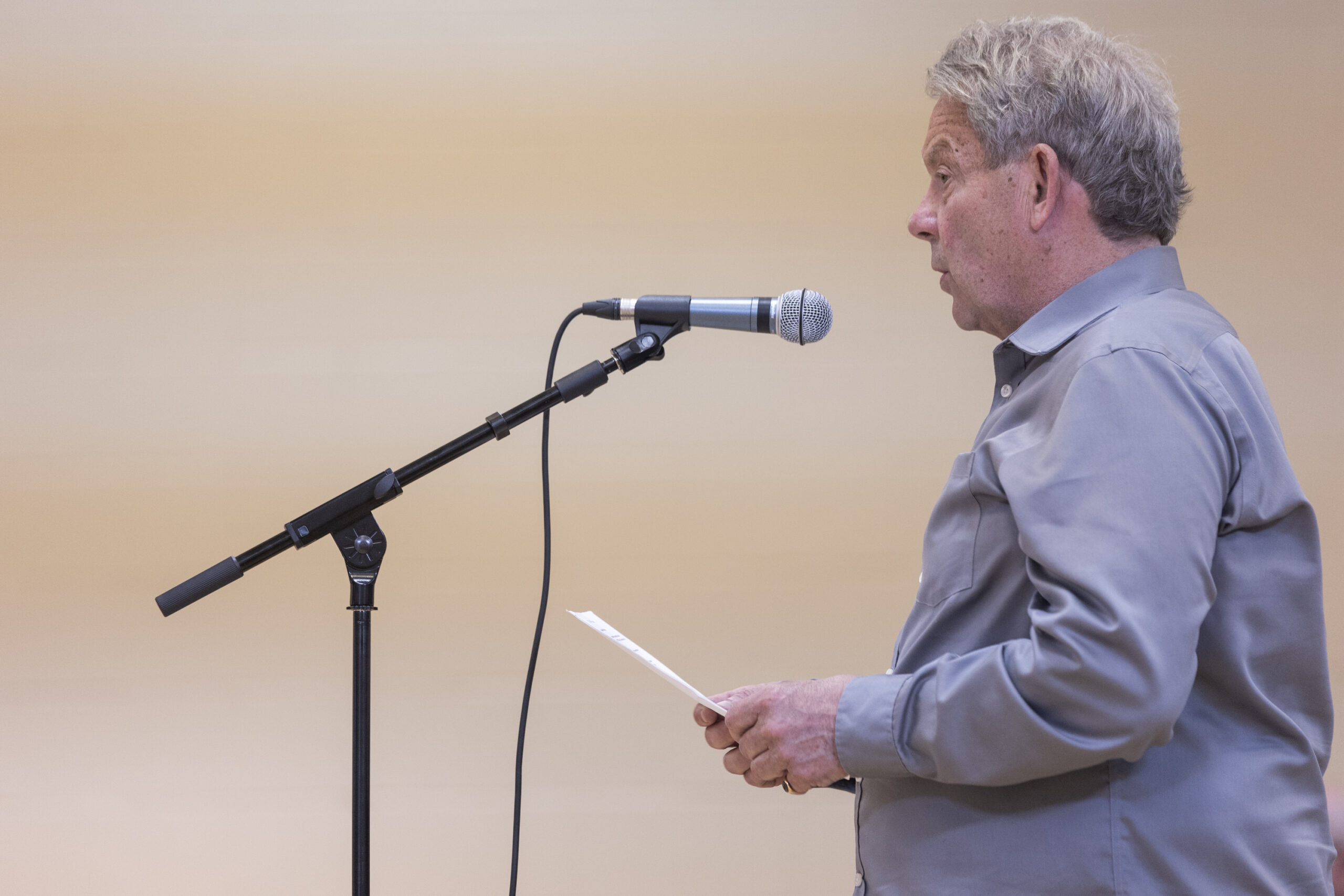
At that time, he said a downturn in the economy left him unable to pay his bills. While he confirmed owning shares in several companies, he reported they were worth a few thousand dollars, barely enough to cover his debts.
The bankruptcy came after the end of his involvement in another major housing project that was supposed to include a golf course and over 1,400 residences. Another developer wound up pursuing the incomplete project.
Some residents who live on the ski hill say this track record scares them.
“The last thing we want is a half-built development,” said Linda Hunter, president of the Fernie Snow Valley Community Association, which represents a few hundred households on the ski hill. “Or something that’s sitting there for years with a half-built bridge or a road and it just sits there stagnant.”
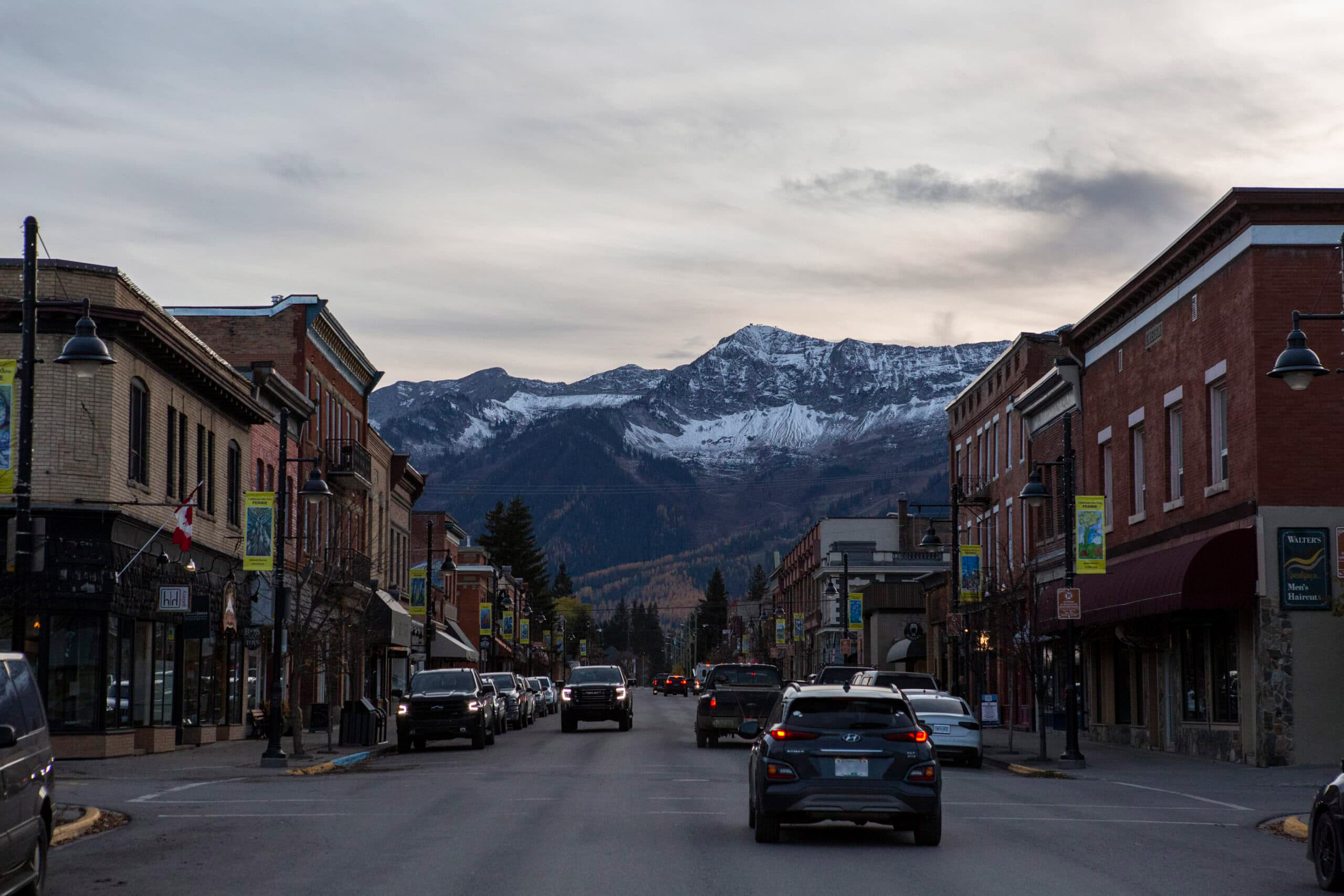
Most of Barrington’s companies ceased operations after 2012, except for Handshake Holdings, which was initially set up in Nova Scotia in 2004.
Throughout his bankruptcy proceedings in 2013, Handshake Holdings remained active, transferring its registration from Nova Scotia to Alberta in February, then British Columbia in October. The court discharged him of his bankruptcy in November 2013.
Barrington did not respond to a list of written questions about his 2013 bankruptcy, his business history, his interactions with McDonald and the political donation made by his wife.
“I’m not interested in chatting,” he said during a brief phone call. “You guys are just walking around trying to set traps with all the people you’re talking to. I’m not interested in that.”
When asked to explain what he meant about setting traps, Barrington hung up.
Shelley Barrington is listed as a director of Handshake Holdings and was also listed as the company’s president between 2013 and 2020, according to corporate filings. She did not respond to messages sent by The Narwhal on LinkedIn and Facebook seeking comment about her role at Handshake Holdings and the political donation made in her name.
Mike Sosnowski is a former politician who donated $500 to McDonald’s campaign, according to the latter’s official campaign report. (McDonald said he accidentally misspelled the former politician’s family name as Sinowski in the campaign report.)
Sosnowski retired in 2022 after serving five terms over 17 years as an elected director in the area that is now represented by McDonald.
The retired politician said he’s known Barrington for nearly 20 years and expects the project will succeed with or without Handshake Holdings.
“If he doesn’t, somebody will, because it’s such a good project that somebody with maybe deeper pockets than him will do this project,” Sosnowski told The Narwhal in an interview.
Sosnowski said he believes the project would improve the finances of the local government, which would see an increase in property tax revenues.
He also agreed with Barrington’s arguments that the development would create new jobs in the community — even though this point spurred a controversy for Sosnowski, prior to the end of his term.
Sosnowski’s sons run a general contracting and supplies business called Foothills Silva Culture that builds roads and could benefit if the project proceeds. In May 2022, facing pressure from the Fernie Snow Valley Community Association, Sosnowski recused himself from discussions about the project due to an appearance of a conflict of interest.
Sosnowski said he’d received legal advice that he was not in a conflict of interest, but he recused himself anyway because he didn’t want to fight the association. He told The Narwhal he no longer had a copy of that legal advice.
But he also took aim at the association, suggesting they’ve engaged in personal attacks against project supporters.
According to minutes of a meeting it held in March 2022, the association spent almost $15,000 on legal fees, research and studies in support of its opposition to the project.
Hunter, the association president, said this money was donated by members who felt strongly about stopping the project. She also said the amount reflects how costly it is for citizens to engage meaningfully in a project review.
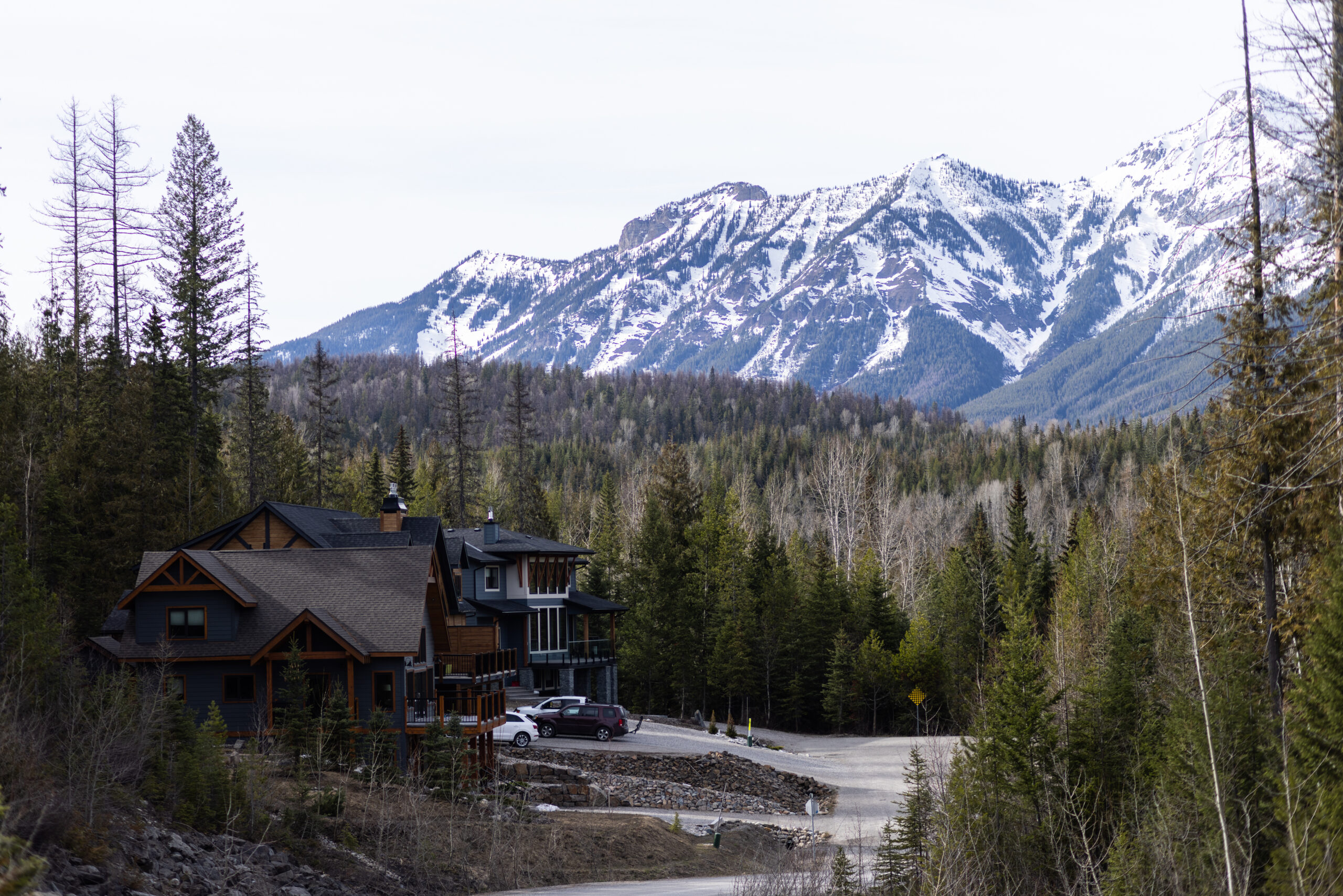
Sosnowski questioned their sincerity.
“I look at Thomas [McDonald] and he’s so young. I don’t know if he’ll stay. He took a real kicking over this project from these people,” he said.
“These people are mean. They’ve got lots of money and lots of time.”
Sosnowski said he donated money to McDonald’s campaign and also offered to assist with fundraising after McDonald approached him expressing interest in running in the 2022 election.
“I helped him,” Sosnowski told The Narwhal. “I talk to people all the time and [I told them] ‘Support Thomas. Give him some money. He’s gonna need some money.’ I’m a politician. I know what it takes. So if I support somebody I support them. And you know what? There’s nothing wrong with that.”
McDonald confirmed he asked Sosnowski’s advice about running in the election and that the retired politician assisted in fundraising or “streamlining” his campaign finances.
But Sosnowski declined to take credit for the donations from Barrington’s wife, Shelley, or another member of the Handshake Holdings team, Dan Savage.
“I don’t think I spoke to either one of them to tell you the truth,” Sosnowski said with a chuckle. “It was other people I spoke to. That surprises me [other people did not donate]. It surprises me and it disappoints me too. I was hoping more people would loosen the purse strings.”
Savage operates a firm called Savage Marketing, listed as a communications consultant on the team behind the Galloway Lands proposal, according to an April 2023 version of Handshake Holdings project application, reviewed by The Narwhal.
When The Narwhal reached out to Savage to request an interview in July, he replied with an email that criticized two opponents of the project by name, describing them as corrupt. He also suggested that others were ski hill residents who made millions of dollars from oil and gas, but did not want anything to change. Savage did not respond to follow-up questions about whether he had any evidence of his claims, nor did he respond to a list of questions about his own involvement with the project and his $1,250-political-donation to McDonald’s campaign.
Instead he sent a short email scattered with additional insults about “local agitators” and a “witch hunt.” He also indicated he believed The Narwhal was headed in a “pathetic direction” for pursuing this report.
“Best not to comment,” Savage wrote in an email.
He did not respond to a follow up email from The Narwhal to explain what he meant.
A number of residents opposed to the project told The Narwhal they believed the project review was flawed. These include two professional environmental consultants who live next to the area of the proposed development, Leslie Frank and Stella Swanson. Frank told The Narwhal that a full environmental assessment is needed to review the potential for “significant long-term impacts on a range of species” as well as cumulative effects. Swanson told the regional district in a letter sent in late April that the developer’s proposed mitigation measures were unlikely to succeed based on what she has previously observed in other development projects.
The regional district itself confirmed to The Narwhal it never released the project application from Handshake Holdings with its official meeting agendas before or during the public hearings and instead only shared a summary of the application.
As well, the local government did not publicly release a copy of the environmental overview report prepared by consultants, agreeing to a request from Barrington to only share the report with people who promised not to share it with anyone else.
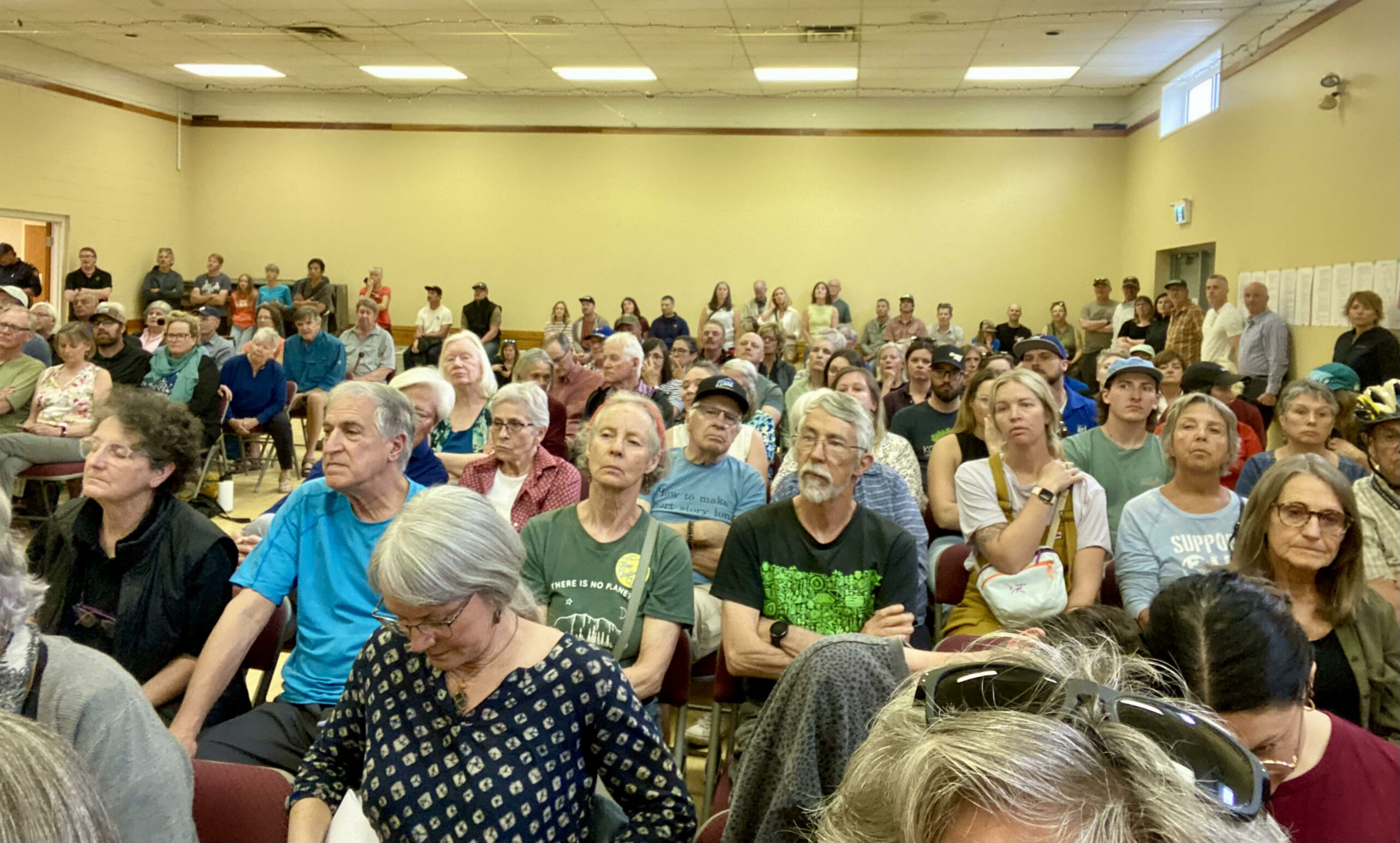
In an emailed statement, the regional district told The Narwhal it maintains an open dialogue with applicants, members of the public and referral agencies during its review of applications. It said there was an “extensive dialogue” with the Galloway Lands developer.
“Interactions with the applicant and their agent were routine interactions associated with processing the application, procuring additional supporting information and keeping the applicant and agent advised of the procedures for processing and advancing the application to [the] board for consideration,” the district said in the email.
The provincial Ministry of Municipal Affairs declined to comment on the project review, noting that the regional district was autonomous and independent.
The ministry said it encourages local governments to apply best practices in land use decisions and to build strong relations with First Nations and consult with them. It also said that elected officials are required to provide an opportunity for residents to share their views on certain types of land use changes through public hearings and that members of the public can contact a provincial ombudsperson to complain if they are concerned about the process or outcome of a public hearing.
The Ministry of Transportation and Infrastructure said the developer still needs to submit a traffic impact assessment before it gives its own approval for the project to proceed.
The Ministry of Forests, which has responsibility over permits under the Water Sustainability Act, did not immediately respond to a request for comment.
The project may also require federal authorization under the federal Fisheries Act, but Fisheries and Oceans Canada told The Narwhal in a statement it had not received any request to review the project and was unable to comment on it specifically.
Sosnowski maintains that Barrington’s proposal can actually prevent further environmental damage.
He said the current zoning would still allow development that could cause more harm to local trails as well as Lizard Creek and the endangered cutthroat trout that live there.
“When Reto [Barrington] first talked to me, for me it was all about preserving what was there,” Sosnowski recounted. “Without this development somebody can build a home three times closer to the creek with septic tanks.”

Other locals say the proposal flies in the face of growing housing affordability concerns in a region that prides itself on access to nature and outdoor activity.
“The way people see this in Fernie is this is the kind of development that was probably okay back in the ’80s or ’90s when expansion and urban sprawl used to be the name of the game,” Harshan Ramadass, the Fernie city councillor, said.
“But people have matured. They’ve understood that denser, walkable communities are what they are looking for. But this is a project that solves nobody’s problem. And there I think it’s caused a lot of dissatisfaction with our community that these people are not listening to our voices.”
— With files from Ainslie Cruickshank
Updated Aug. 31, 2023, at 3:24 p.m. MT. This article was updated to clarify that B.C. has existing laws that are meant to offer protections for endangered species, but the province does not have a law dedicated to protecting endangered species.
Get the inside scoop on The Narwhal’s environment and climate reporting by signing up for our free newsletter. On a warm September evening nearly 15...
Continue reading
Climate change, geopolitics and business opportunities power a blue economy

10 billion litres of sewage are dumped into Winnipeg’s lakes and rivers each year. Some...

Court sides with Xatśūll First Nation, temporarily halting Mount Polley mine waste expansion
